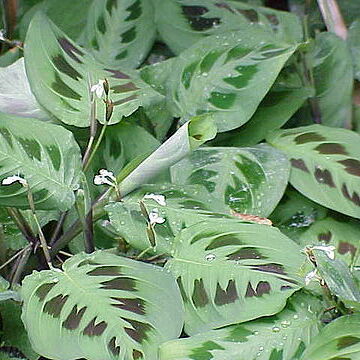Herbs caulescent, erect or prostrate, sometimes much branched, occasionally with tuberous, swollen rhizomes. Leaves both basal and cauline or all cauline; petiole sheathing at base. Inflorescences 2 to several per leafy shoot, each a dichotomous panicle or raceme; bracts few, each subtending 2--6 pedicellate flower pairs, herbaceous, late deciduous or persistent. Sepals green, herbaceous. Corolla white; tube 4--14 mm, base often inflated; lobes subequal. Staminode tube usually short; staminodes white, occasionally tinged or marked with purple; outer staminodes 2, petaloid, obovate, exceeding corolla lobes; cucullate staminode with median or subterminal appendage; callose staminode obovate, apex petaloid. Ovary 1-loculed by abortion. Style thick. Fruit a capsule, obovoid to ellipsoid, dehiscent. Seed 1.
Caulescent herbs from tuberiferous rhizomes; leaves both basal and cauline; stem branching rather diffusely and bearing at the tips rather loose racemiform cymes of rather small, pedicellate flowers subtended by caducous, somewhat foliaceous bracts; sepals 3, free, equal; corolla with a more or less prominent tube, the lobes subequal; staminodia 3-4, the outermost 2 very conspicuous and labelli-form; fertile stamen 1, petaloid; ovary inferior, 1-celled; fruit nut-like and indehiscent, 1-seeded.

